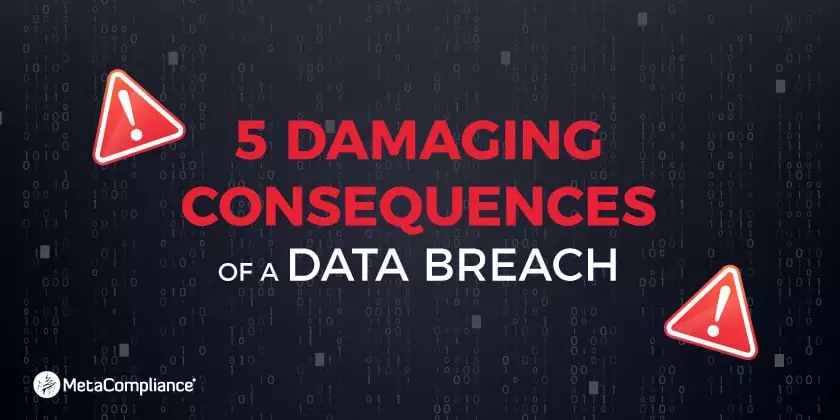When it comes to the consequences of data breach, the repercussions are far-reaching and deeply impactful. These breaches have evolved from mere cyber security issues to instigators of financial losses, reputational damage, legal troubles, regulatory fines, and a profound erosion of consumer trust. Despite a greater emphasis being placed on data security, hackers are continually finding new ways to circumvent defences to gain access to valuable corporate data and credentials.
Whether it’s through sophisticated social engineering techniques, ransomware, malware or third party supply chain cyber attacks, hackers are trying every available tactic to infiltrate, expose and profit from this sensitive information.
According to the Check Point 2023 Mid-Year Security Report, there had been an 8% surge in global weekly cyber attacks in the second quarter of 2023, the most significant increase in two years, highlighting how attackers have cunningly combined next-gen AI technologies with long-established tools to conduct disruptive cyber attacks.
Unfortunately, this worrying increase in data breaches does not correlate with an increase in organisational preparedness. In fact, many organisations are woefully underprepared and fail to implement the basic security measures that are needed to prevent a cyber attack by hackers.
According to IBM’s Cost of Data Breach Report 2023, 51% of organisations are planning to increase security investments as a result of a breach.
It’s this complacency to cyber security that exposes organisations to significant risk and places them under intense scrutiny, both with regulators and their customers, should a breach take place.
Organisations need to fully grasp the far-reaching consequences that a data breach could have on their business if they want to mitigate risk and defend against attack.
Some of the more damaging consequences of data breach include:
1. Data Breach Consequences: The Toll on Financial Loss
The financial impact of a data breach is undoubtedly one of the most immediate and hard-hitting consequences that organisations will have to deal with. According to IBM’s Cost of Data Breach Report 2023, the average cost of a data breach reached an all-time high in 2023 of USD 4.45 million. This represents a 2.3% increase from the 2022 cost of USD 4.35 million.
Costs can include, compensating affected customers, setting up incident response efforts, investigating the breach, investment in new security measures, and legal fees, not to mention the eye-watering regulatory penalties that can be imposed for non-compliance with the GDPR (General Data Protection Regulation).
Organisations in breach of the GDPR can be fined up to 4% of annual global turnover or 20 Million Euros, whichever is greater. If organisations are under any illusion that these financial penalties will not be enforced, in May 2023, the Irish Data Protection Commission (DPC) imposed a historic fine of €1.2 billion on US tech giant Meta.
A breach can also significantly impact a company’s share price and valuation. This is exactly what happened to Yahoo after it was breached in 2013. The breach was leaked in 2016 when the company was about to be bought over by US telecoms company Verizon. The acquisition went ahead with the company buying Yahoo for a discounted rate of $4.48 billion, around $350 million less than the original asking price.
2. Consequences of Data Breach: The Impact on Reputational Damage
The reputational damage resulting from a data breach can be devastating for a business. Research has shown that up to a third of customers in retail, finance and healthcare will stop doing business with organisations that have been breached. Additionally, 85% will tell others about their experience, and 33.5% will take to social media to vent their anger.
News travels fast and organisations can become a global news story within a matter of hours of a breach being disclosed. This negative press coupled with a loss in consumer trust can cause irreparable damage to the breached company.
Consumers are all too aware of the value of their personal information and if organisations can’t demonstrate that they have taken all the necessary steps to protect this data, they will simply leave and go to a competitor that takes security more seriously. A data breach can easily result in identity theft when sensitive information is exposed to unauthorised individuals. Hackers can use this information to steal a person’s identity and commit fraudulent activities, such as opening new accounts or making unauthorised purchases.
Reputational damage is long-lasting and will also impact an organisation’s ability to attract new customers, future investment and new employees to the company.
3. Data Breach Consequences: The Disruptive Effect of Operational Downtime
Business operations are significantly disrupted following a data breach. The aftermath demands containment of the consequences of data breach, prompting organisations to conduct extensive investigations into the breach’s origins and the compromised systems.
Operations may need to be completely shut down until investigators get all the answers they need. This process can take days, even weeks to identify vulnerabilities, depending on the severity of the breach. This can have a huge knock-on effect on revenue and an organisation’s ability to recover.
According to IBM’s Cost of Data Breach Report 2023, the average time to identify and contain a breach is 277 days.
4. Consequences of Data Breach: Legal Implications and Actions
Under data protection regulations, organisations are legally bound to demonstrate that they have taken all the necessary steps to protect personal data. If this data security is compromised, whether it’s intentional or not, individuals can seek legal action to claim compensation.
As the frequency and severity of data breaches continue to rise, we anticipate more of these group cases tied to the consequences of data breach being brought to court.
5. Data Breach Consequences: The Impact of Sensitive Data Loss
If a data breach has resulted in the loss of sensitive personal data, the consequences can be devastating. Personal data is any information that can be used to directly or indirectly identify an individual. This includes everything from, name, passwords, IP address and credentials. It also includes sensitive personal data such as biometric data or genetic data which could be processed to identify an individual.
The reality is that if a critical patient had their medical records deleted in a data breach it could have a serious knock-on effect on their medical treatment and ultimately their life. Biometric data is also extremely valuable to cybercriminals and worth a lot more than basic credit card information and email addresses. The fallout from breaches that expose this data can be disastrous and exceed any financial and reputational damage.
Regardless of how prepared your organisation is for a data breach, there’s no room for complacency in today’s evolving cyber security landscape, especially regarding the consequences of data breach. A coordinated security strategy must be in place to protect data privacy, mitigate threats, and safeguard your brand’s reputation.
MetaCompliance specialises in providing the best Cyber Security Awareness Training available on the market. Our products directly address the specific challenges that arise from cyber threats and corporate governance by making it easier for users to engage in cyber security and compliance. Get in touch for further information on how we can help transform cyber security training within your organisation.




